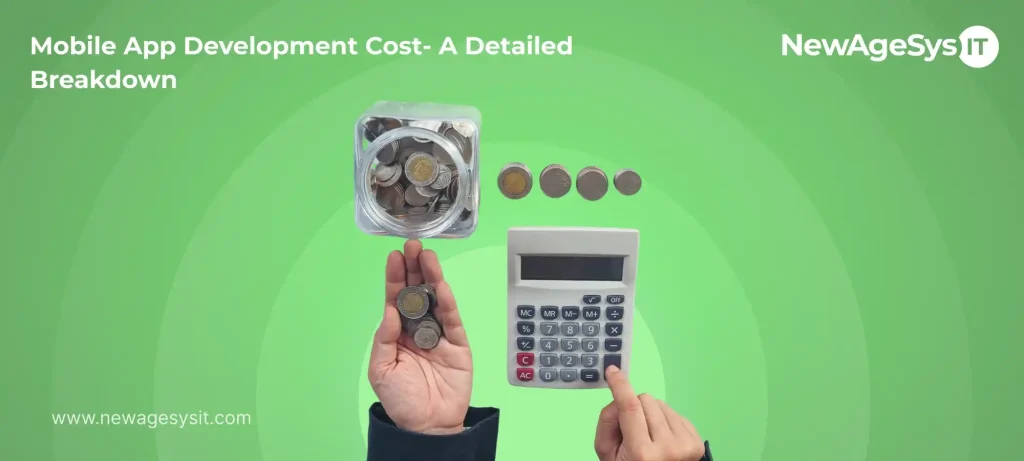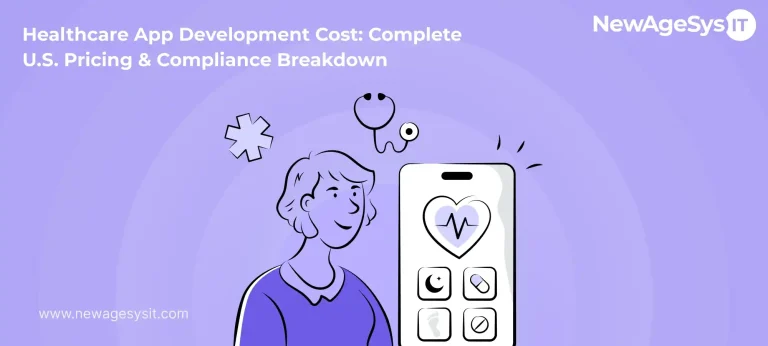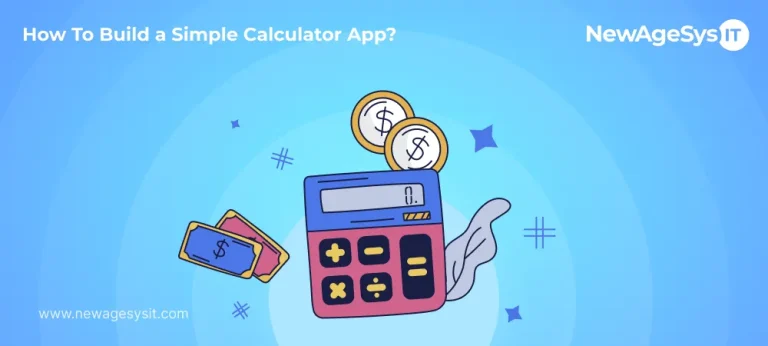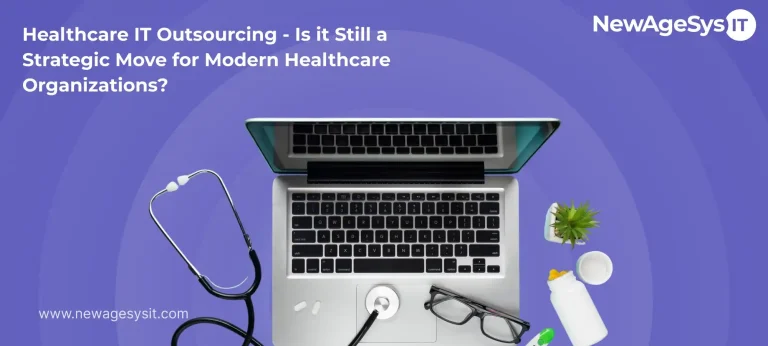Key takeaways:
- The App Store boasts over 2 million apps, while the Google Play Store has more than 2.7 million, reflecting the growing competition and demand for mobile applications.
- App development cost can typically range between $5,000 and $300,000+, depending on complexity, features, scope, and platform.
- Major cost drivers for app development include app complexity, UI/UX design, backend infrastructure, platform choice, and the location of the developer team.
- Hidden costs exist, so be prepared for ongoing expenses, including App Store fees, cloud hosting, maintenance, updates, and compliance costs.
- Budget Optimization Tip: Start with an MVP development, employ pre-built tools, and opt for cross-platform development if you wish to save cost and time.
The world has witnessed a significant growth in smartphone users. As a result, businesses of all sizes and domains are making efforts to expand their reach through mobile app development. However, calculating app development costs might pose a challenge for your business, preventing you from making an informed decision.
According to a recent study, the number of smartphones in use has surpassed 7.4 billion, underscoring the increasing importance of apps. The App Store already has 2 M+ apps. Additionally, the Google Play Store has over 2.7 million apps; how interesting does that sound?
It’s no wonder that understanding the mobile app development cost gives businesses the power to build an app. So, here’s the much-awaited question: how much does it cost to make an app? Every app is different and should consider gathering various elements to achieve its specific objectives.
An on-demand app would be different from a banking app or a social networking app. Hence, mobile app costs can vary based on several factors, making it essential to plan your budget accordingly.
In this blog, we’ll discuss:
- How much does it cost to develop an app for your business?
- What does the mobile application development cost cover?
- What are the hidden costs involved in the app development?
- How much to make an app with the best possible returns?
So, whether you need to streamline your customer experiences, explore new markets, or scale operations, this article opens a path to stay aware of the mobile app costs that speak well for your business.
Let’s get started!
Average Mobile App Development Cost Overview
According to a Grandview Research study, the global mobile app market size is expected to grow at a 14.3% compound annual growth rate (CAGR) from 2024 to 2030. This indicates that the projected market size for mobile app development is expected to reach USD 626.39 billion by 2030. This is why app development companies are highly in demand among brands that wish to build stunning and reliable mobile apps to scale their businesses.
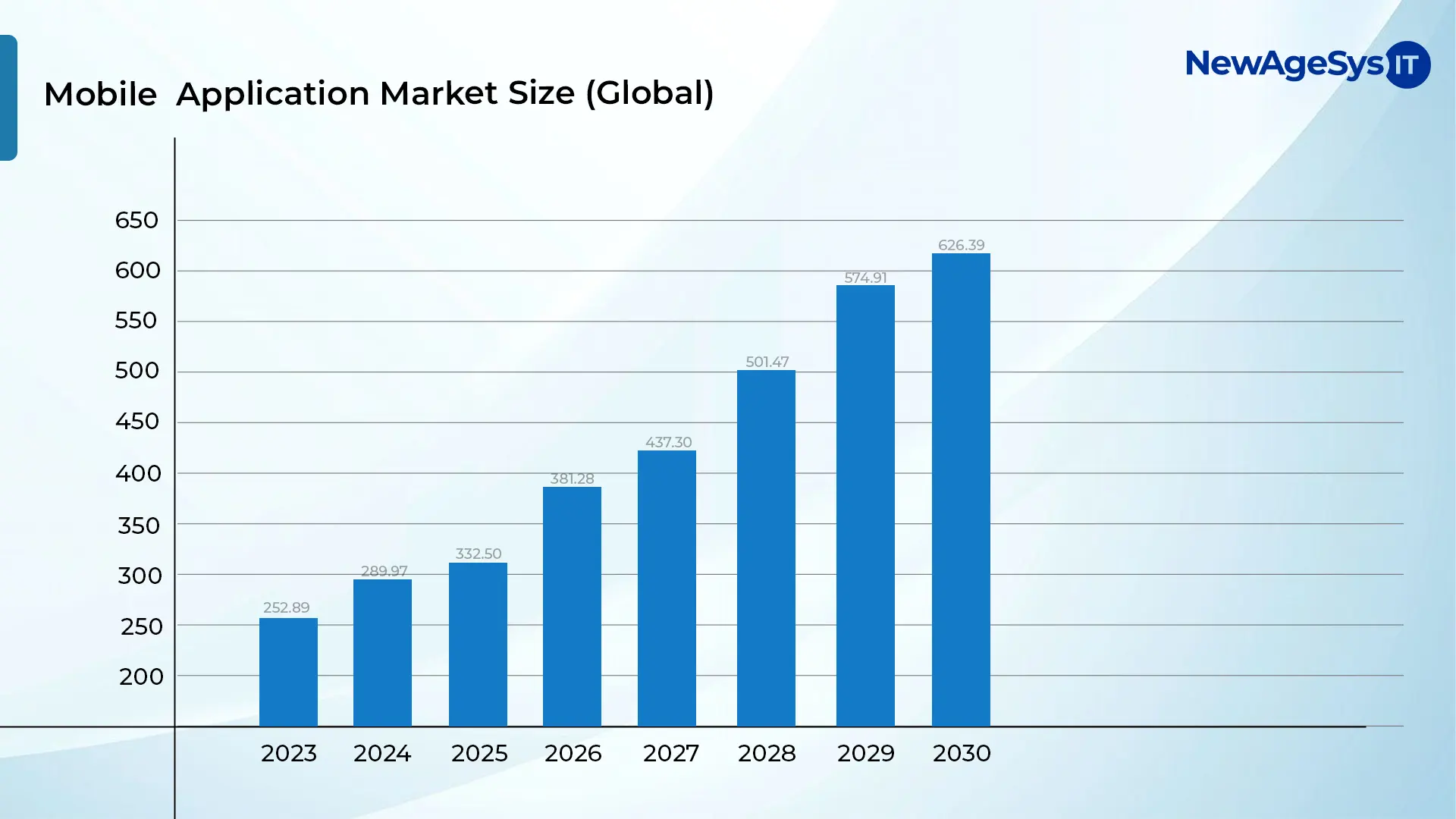
Most businesses approach an app development company with an idea, without exposure to the development process or costs involved in building a mobile app. Hence, having detailed knowledge about the requirements and desired functionalities is a prerequisite to creating a fair estimation.
Various factors, including app complexity, features, development strategy, targeted platforms, functionalities, maintenance, and third-party integrations, influence custom app development costs. There is also a standard calculation formula to determine the overall mobile application development cost. This counts the hours required for each development process and multiplies them by the billable development hours.
Total app development cost = platform-specific app development hours + backend server hours x hourly development rates
Factors That Can Contribute To Your Mobile App Development Cost
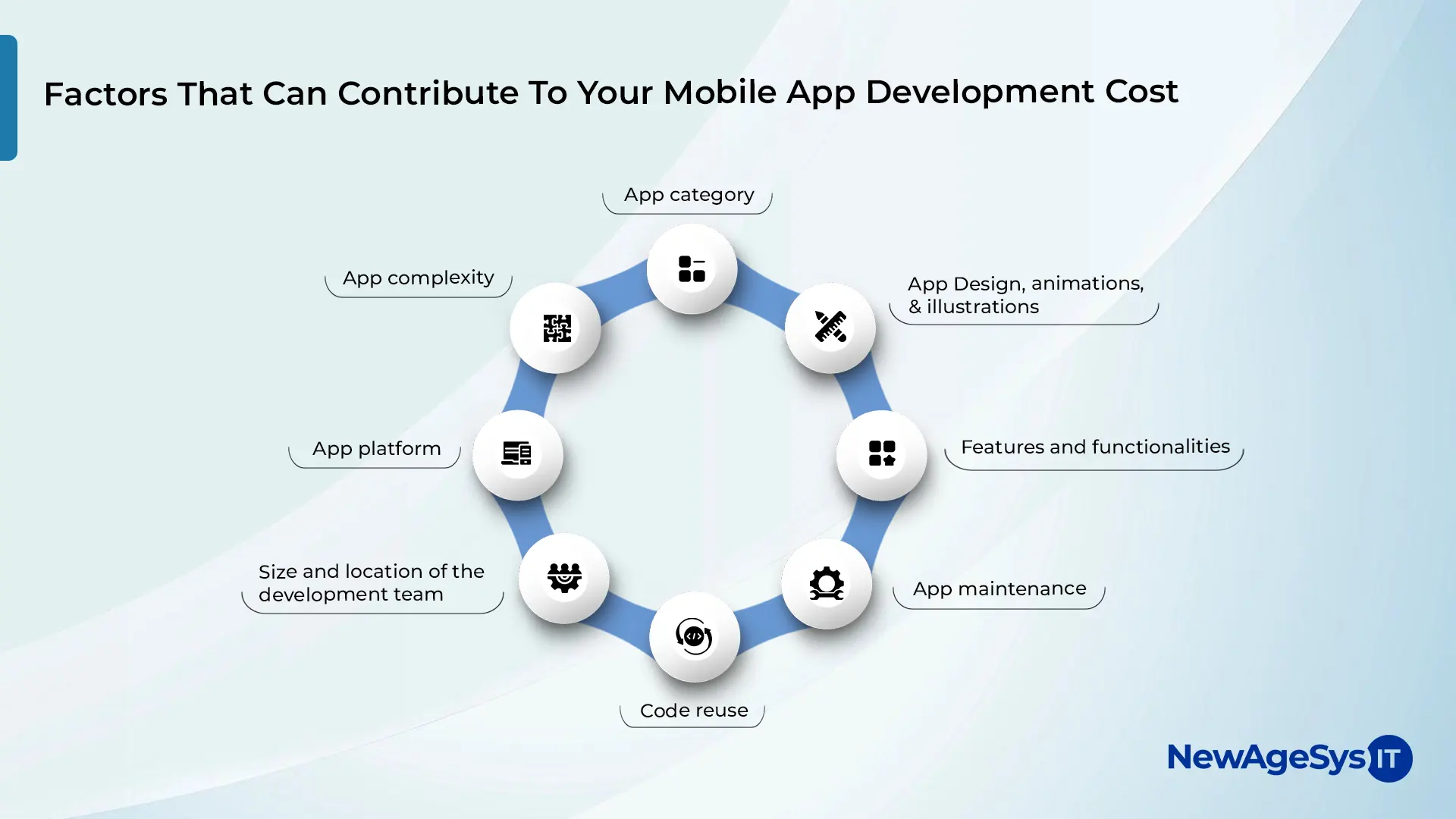
How much does it cost to create an app? Mobile application development costs rely on a multitude of factors you should take into account. Understanding these aspects will enable you to make informed, cost-effective decisions and achieve the best returns. Nevertheless, it enables you to move forward with your budget specifications. Let’s take a detailed look at the driving factors for the cost of mobile app development:
App complexity
A simple app typically includes basic user features, such as a user profile facility, a login system, a dashboard, and basic functionalities, along with limited administration capabilities. For example, NewAgeSysIT developed Safety24Our, a simple yet powerful app exclusively designed for public safety. A medium-complex app, on the other hand, incorporates various features that enhance user engagement and facilitate app monetization. The apps can also include payment gateways, social media integrations, user privacy, audio and video streaming capabilities, etc.
With the expertise of NewAgeSysIT, Secure Posit was able to build an app that made digital payments seamless and secure. A highly complex app would be the most expensive as it involves advanced data handling, features, specialized user interfaces, and integrations with external systems. For example, Auntie App, a custom childcare app, bridged the gap between parents and babysitters, with simplified profile creation, real-time communication, secure scheduling, app transactions, and background verification features for authenticity.
| App Complexity | What’s in | Estimated Timeline (in months) | Average Cost |
|---|---|---|---|
| Simple Apps |
|
2-3 | $5,000- $50,000 |
| Medium Complex Apps |
|
3-9 | $50,000-$1,20,000 |
| Complex Apps |
|
10 | $100,000-$300,000 |
Note: The cost estimates listed in the table are approximate and can change based on the app’s scope, expectations, and the complexity, integrations, etc.
App category
App category, or the way the apps are classified, can impact the mobile app development costs. Here are the top app categories:
- E-commerce apps: These include multiple features, enabling users to purchase, transact, and engage with the products/services a business offers. App development cost can also depend on the following factors: navigational ease, user-friendliness, integrations, and various other features/functionalities.
- Social networking apps: Social networking apps let people connect and interact with a unified platform. They enable users to communicate, express thoughts and opinions, share information, perform a job search, and form relationships. Social media app costs generally tend to be on the higher side compared to the cost of less complex mobile applications.
- On-demand apps: These apps help users order and receive products/services with a click, without waiting or scheduling. By connecting both customers and service providers, these apps offer high-end access to a wide range of products/services. On-demand app development costs are dependent on the features, complexity, and development approach.
- Hardware-based apps: all the IoT-based apps tend to be largely dependent on hardware devices for data extraction, sending commands to perform specific actions, and so on. The cost of developing a mobile app here depends on the app’s features, complexity, platforms, etc.
| App Category | Average App Development Cost (in dollars) | Approx. Hours |
|---|---|---|
| Social media app | 50,000 - 150,000 | 1200- 1500 |
| E-commerce app | 50,000 - 350,000 | 1200- 1600 |
| Educational app | 60,000 - 250,000 | 900- 1100 |
| Dating app | 50,000 - 350,000 | 1400- 1600 |
| Gaming & entertainment app | 50,000 - 300,000 | 1800-2500 |
Note: The cost estimates listed in the table are approximate and can change based on the app’s scope, expectations, and the complexity, integrations, etc.
App Design, animations, and illustrations
App design costs usually range between $3,000 and $30,000 or more. This is usually influenced by factors like app design complexities, features, platform used, designers’ expertise, etc. Incorporating animations and illustrations can improve user engagement, but also accelerate development time/costs.
- App design and research costs: $100-$350+
- UX design costs: $2000-$8000+
- UI design costs: $10,000-$40,000+
- Branding costs: $5000-$20,000+
- Animations and illustrations costs: $1000-$20,000+
Features and functionalities
If you wish to integrate features or functionalities into the app, it can affect the total cost. The cost of mobile app development for your expected app can continue to increase based on the additional features you wish to add. It is suggested that you concentrate on the core features during the initial phase of app development. This lets you provide a high customer experience within a limited budget. The right option for you is to develop an MVP. This refers to the first version of a product with a foundational set of features. With MVP, you can save on costs and gather useful feedback from the users. Here is an app development cost breakdown in this regard:
| Feature/Functionality | Estimated Cost Range (USD) | Complexity Level | Approximate time to complete |
|---|---|---|---|
| User Authentication | $1,000 – $5,000+ | Low to Medium | 1-2 weeks |
| User Profiles | $1,000 – $5,000+ | Low to Medium | 1-2 weeks |
| Social Media Integration | $1,000 – $5,000+ | Low to Medium | 1-2 weeks |
| Push Notifications | $500 – $5,000+ | Low to High | 1-3 weeks |
| In-App Purchases | $500 – $5,000+ | Low to High | 1-3 weeks |
| Data Storage | $500 – $5,000+ |
Low to High
|
1-2 weeks |
| Geolocation Services | $500 – $5,000+ | Low to High | 1-3 weeks |
| Image/Video Capture | $500 – $5,000+ | Low to High | 1-3 weeks |
| Custom Animations | $500 – $5,000+ | Low to High | 2-4 weeks |
| Advanced Features (AI, AR) | $5,000 – $50,000+ | High to Very High | 4-12+ weeks |
App maintenance
App maintenance usually incurs annual costs calculated at 15-20% of the starting development budget. Factors affecting this include app complexity, frequency of app updates, bug fixes, design alterations, and support standards, among others.
Code reuse
You can implement code reuse across platforms and reduce costs using frameworks like React Native. You no longer need separate codebases for Android and iOS here, hence streamlining development and maintenance becomes easier.
Size and location of the development team
The team of developers, designers, and project managers directly impacts the app development costs. Larger teams can speed up development but increase overall costs. App development costs also vary based on region.
App platform
Development for a single platform (Android or iOS) is specifically less expensive compared to targeting both. With cross-platform solutions, you can eliminate this and enable simultaneous deployment. Cost estimates for a web application development are about $15,000 – $50,000. For cross-platform applications, it usually ranges between $25,000 to $60,000. The cost to build an app (hybrid) ranges between $10,000 to $1,50,000. For iOS applications, the costs range between $15,000 to $450,000, while for Android applications, the costs typically fall between $20,000 to $300,000.
Hidden Factors You Should Consider
While calculating mobile app development cost, you should also take care of the hidden expenses involved. These costs can usually impact your overall app development budget and be incurred during various development phases, and post-app launch. Let’s learn about the hidden mobile app development costs to be considered.
Third-Party Integrations
Most applications require third-party services, such as push notifications, payment gateways, and analytics platforms. Nevertheless, they also include a subscription or usage fee, which can increase with time.
Backend Infrastructure & Servers
If your application requires the following: real-time data syncing, massive data storage, or user authentication, you would need a great backend infrastructure. This can result in ongoing cloud hosting expenses for providers like Google Cloud, AWS, or Azure. Scaling the mobile application to bear more users would also add to these costs.
App Store Fees
Google Play Store and App Store charge developer fees. Also, they usually take 15% to 30% of in-app purchases or subscription costs, which can significantly minimize your profit level.
Marketing & User Acquisition
App development is only the first phase. You would need a marketing strategy to attract and retain users. This might include influencer partnerships, social media advertising, and SEO strategies. App category and target audience are other important aspects with respect to which marketing costs can change.
Security & Compliance
It is necessary to ensure that the application meets data protection requirements and secures it against potential breaches. You need to invest in security audits, encryption methods, IT security, and compliance testing for this, further adding to the app development cost.
Understanding the above hidden costs enables you to work with an ideal budget, avoiding potential financial challenges.
Compliance Costs & Taxes
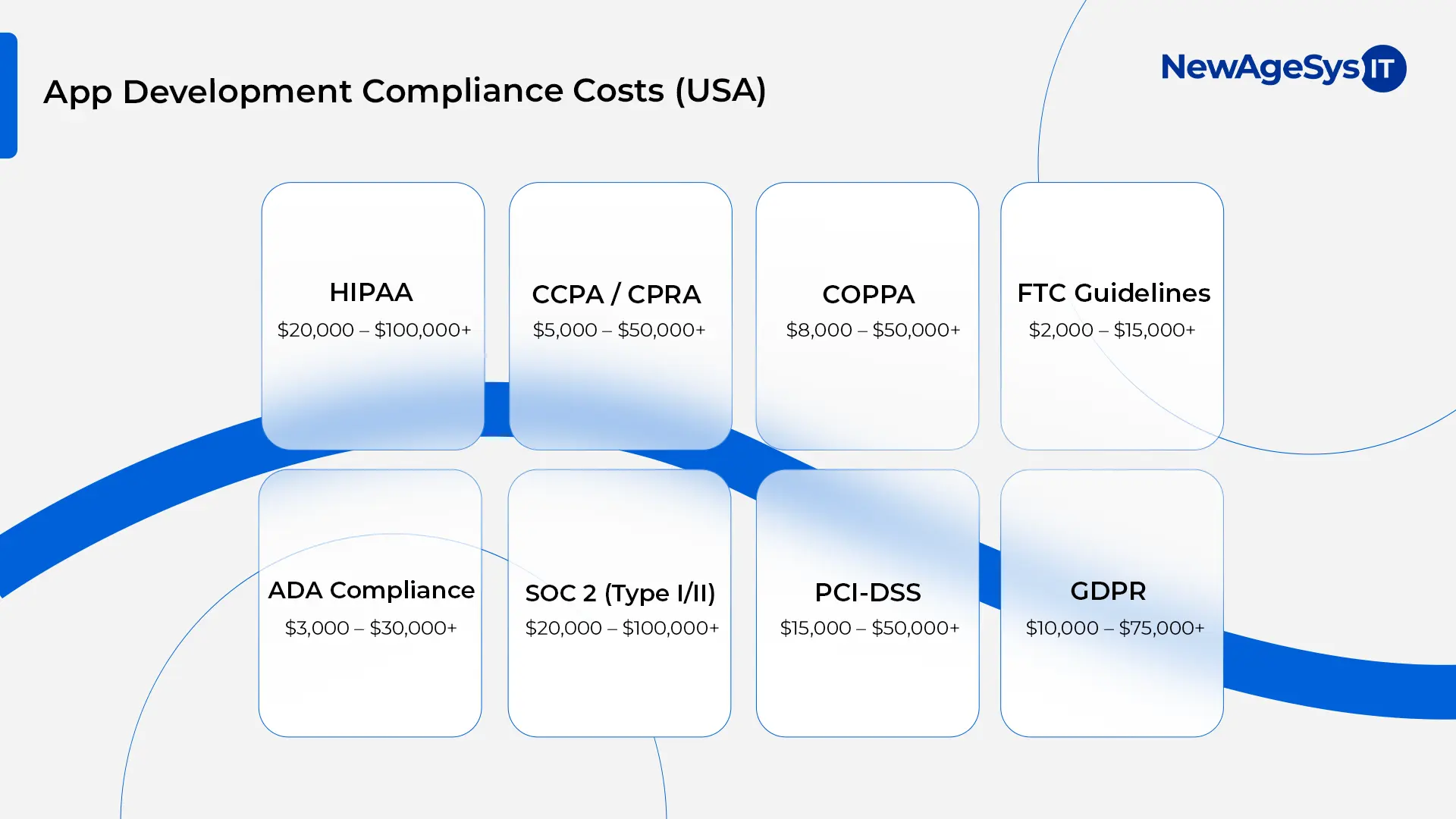
For apps, depending on their target markets and segments, compliance plays a major role. For example, the state sales tax of 6.625% is applicable in New Jersey. Unlike some other states, their local jurisdictions don’t levy an additional local sales tax. That said, special tax programs, such as Urban Enterprise Zones, could offer lower rates in specific areas.
Beyond taxes, certain compliance costs that impact the total app development budget include:
HIPAA (Health Insurance Portability & Accountability Act):
The standard applies to healthcare-related apps or any mobile app that handles protected health information. It requires technical, administrative, and physical safeguards, audit controls, and Business Associate Agreements. Costs can range from $20,000 – $100,000+ based on scale.
CCPA (California Consumer Privacy Act) & CPRA (California Privacy Rights Act):
It applies to the applications that serve California residents and reach specific thresholds (say $25M+ revenue, 100K+ users, etc.). It needs data access, deletion, opt-out features, and privacy notices. Costs can range from $5,000 to $50,000 as per the data operations.
COPPA (Children’s Online Privacy Protection Act):
The standard applies to mobile apps targeting children below 13 years old, or that collect data from them. It requires detailed privacy policies, parental consent, and restricted data collection. The apps should integrate mechanisms for age verification to manage parental consent appropriately.
FTC Guidelines (Federal Trade Commission):
FTC guidelines apply to all applications in terms of consumer protection, data security, and marketing processes. It can fine companies if there exist illegal practices, false marketing, or failure to take measures to secure user information. The app should adopt transparent privacy policies, legal claims, and superior data security.
ADA Compliance (Americans with Disabilities Act):
These regulations apply to the applications that offer public services. They require accessibility to users who have disabilities, for example, navigation support, screen reader assistance, etc. It deals with litigation for non-compliant applications and websites.
SOC 2 (System and Organization Controls):
SOC2 applies to mobile or SaaS apps that manage user-specific data, especially in enterprise or B2B settings.
PCI-DSS ( Payment Card Industry Data Security Standard):
The standard applies to all apps processing debit/credit card transactions. It includes the policies for tokenization, secure card handling, audits, and encryption.
GDPR (if applicable):
Applies when you have EU users, even though you are based in the U.S.
Besides these, there are also other compliance standards (if applicable) like ISO 27001, ISO 27701, and NIST Cybersecurity Framework.
Step-by-Step Mobile App Development Process
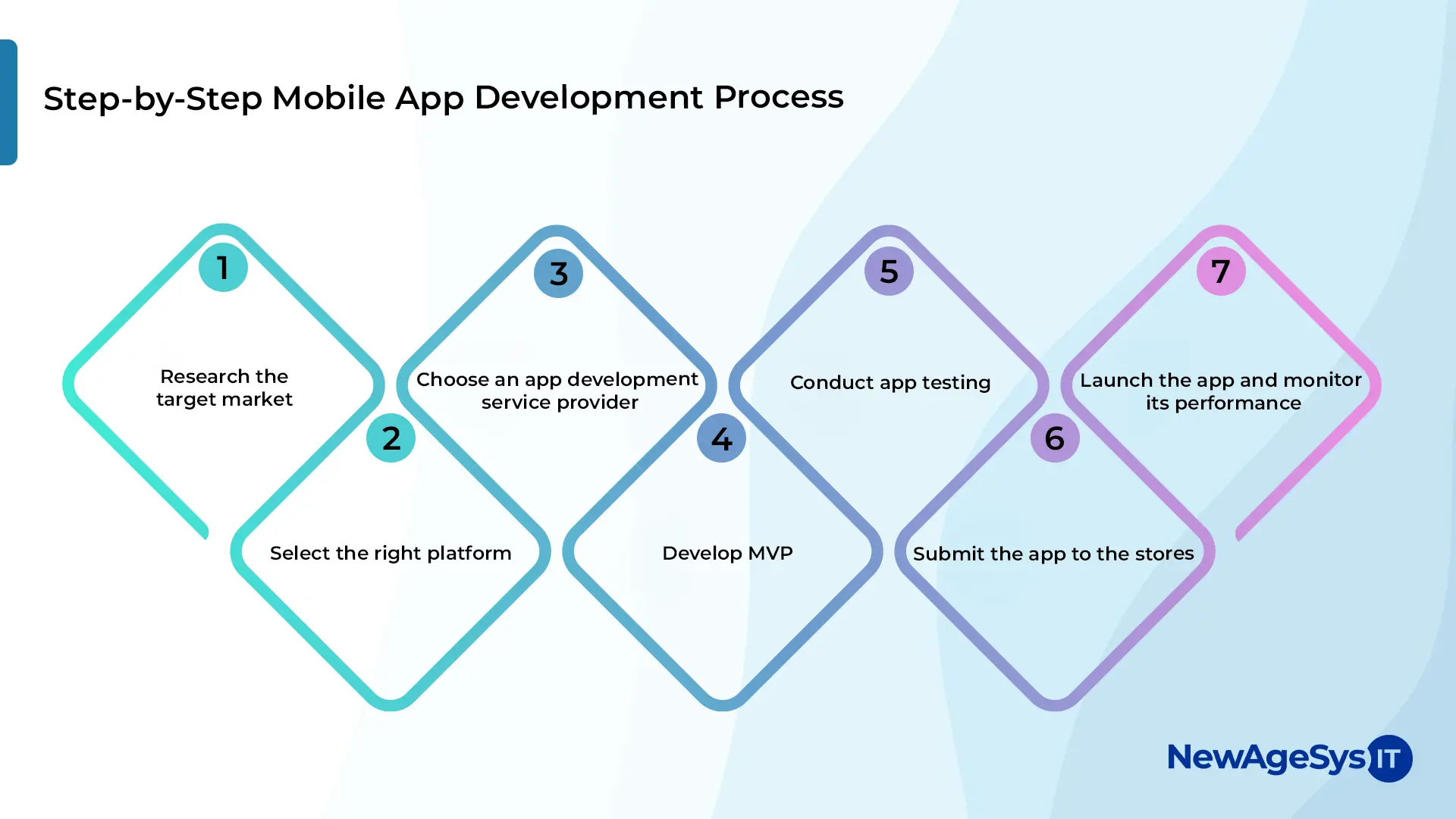
Here’s a representation of the step-by-step process you need to follow while building an app for your business:
1. Research the target market
2. Select the right platform
3. Choose an app development service provider
4. Develop MVP
5. Conduct app testing
6. Submit the app to the stores
7. Launch the app and monitor its performance
1. Research the target market
While building an app for your business, you should perform research and figure out more about the target audience. This can let you have a detailed understanding of the market dynamics, the way consumers interact with brands, competitors, and more. You can also get a clear picture of the user reviews for top apps in the market. This lets you come up with a better product.
2. Select the right platform
Your mobile app can be compatible with iOS and Android platforms. However, if you have a limited budget, you can build an Android or an iOS app. Consequently, you can boost your service to perform on another platform too.
3. Choose an app development service provider
Hiring a reliable app development company ensures your app incorporates advanced features and functionalities within the expected deadlines. A mobile app development company includes dedicated app developers, UI/UX experts, project managers, and marketers who offer relevant suggestions and carry out your vision. The company also provides ample access to the latest technologies and industry expertise.
4. Build a Minimum Viable Product (MVP)
It is a great solution to validate your app idea without spending too much. You can seek the help of a top app development company to understand the key features and USPs for your app and develop an MVP accordingly.
5. Conduct app testing
Testing is a significant aspect to consider while building your business. Test everything, ranging from the application’s performance, UX, to content. With appropriate testing, you can minimize the development time and cost, find bugs, and improve the business’s reputation.
6. Submit the app to the stores
After you complete the app testing and fix the bugs, you can go for app submission across the App Store or the Play Store. But while publishing the app, you should make sure that it complies with Apple’s and Google’s developer guidelines. Nevertheless, you should align the monetization model with their needs.
7. Launch the app and monitor its performance
Once the app gets launched, ensure tracking app performance with the app analytics tools. Also, introduce updates to improve user engagement and address concerns/requests.
Tips & Tricks to Reduce Your Mobile App Development Cost
By prioritizing your price for developing an app, you can plan the costs to properly allocate the funds at every development phase.
Define the App’s Core Functionality to Prevent Cluttering
Your mobile app functionality should be highly focused on eliminating clutter. It not only improves the user experience but also enables decluttering and allocating the mobile application development cost. These necessary factors should depend on what you plan to achieve with your app launch. Be it personalized learning, gathering survey-specific data, or providing a great streaming experience, your plan should lay out specific milestones in prior.
Use Pre-Built Templates/ Libraries
With pre-built module libraries and templates, you can reduce the app development time. But, beyond the development time, these templates reduce the app development budget. You can integrate and customize the existing app features rather than developing an app from scratch. This lets you reduce the consumption of overall resources and invest money in some crucial tasks.
Opt for a No-Code Development Strategy
Incorporating automated tasks and proceeding with an MVP development are critical aspects in mobile app development. Fortunately, several low-code development platforms with features to minimize manual coding requirements are available in the market. Low-code platforms are a rescue for modern developers, thereby reducing the mobile app development costs. The low-code development platform market is expected to jump from USD 37.39 bn in 2025 to USD 264.40 bn by 2032, with a CAGR of 32.2% over the forecast period, according to Fortune Business Insights Survey.
Consider a Cross-Platform Approach
Cross-platform development is popular for saving on costs; however, it might demand that you give up certain functionalities. Compared to native apps, cross-platform development targets multiple platforms, which is a major challenge. Most advanced mobile applications are not developed cross-platform, as it demands a certain kind of compromise. It is an ideal choice for innovative startups and MVPs. However, for quality-specific solutions, it is advised to consider native technologies.
Outsource to Budget-Friendly Markets
Application outsourcing is a booming market with numerous benefits: you can relax, be free of responsibilities, and ensure uninterrupted quality. More mobile app development projects are being outsourced due to relatively lower mobile app development costs. But also note that outsourcing comes with hidden app development costs, like GST, VAT, etc.
Leverage Open-Source Tools & APIs
Use open-source tools and APIs to take a cost-effective app development approach. For example, Firebase APIs or Google Maps let you add more app features while paying less for them. This helps you control the mobile app development cost for longer.
Build Clean & Intuitive Designs
Simplicity should be a concern in reducing the cost to develop an app. Simpler designs resonate great with the users’ interests. Avoid intricate details, because this could be impressive and confusing at the same time. Pay attention to functional appearance, and ensure every element is beneficial. This approach helps make app development streamlined and build high ROI.
Include Cloud Services for Smooth Scalability
Cloud development solutions are the best ways to achieve great scalability and cost management. With pay-as-you-use cloud models, developers can eliminate the unwanted cost of developing an app. Cloud services reduce the need to invest in a data center of your own. You can hence save costs on infrastructure, power needs, hardware, etc, making your app smooth.
Use ChatGPT to Build App
The ideal approach to save the cost of building a mobile app is to use advanced tools. GPT, for instance, helps you build apps from scratch without the need for manual coding. Building an app with GPT certainly has limitations, but it would be a good starting point.
Hacks to Boost ROIs on Mobile App Development Costs
Here are a few hacks you can follow before you launch the app development plan, thus helping you strategize the security of the app ROIs.
Conduct a detailed market research on the cost to develop an app
The ideal approach to boost the app’s ROI is to understand why you launched the app with detailed research. You should collect stats particular to your targeted industry, else it could be risky for ROIs. It is important to keep the retention rate steady. Researching the app can help your app keep a steady retention rate with a detailed roadmap of the app features and required navigation strategy.
Pay attention to user experience
User experience involves a dynamic process; improving it demands building an app with an ideal UI and then taking the journey from there. As devices and users evolve, mobile UI design trends also evolve along with them. Keeping up with these trends can contribute well to the ROI, which justifies the total app development cost you invest and helps you earn extra money.
Optimize performance for faster loading times
App loading time is a survival factor in the market as it is connected directly to the bounce rate. Think with Google states that the bounce rate probability increases to 32% once the page load time traverses from 1-3 seconds. So, how to minimize the app loading time? By incorporating an ideal maintenance budget while planning the cost to build apps, you can achieve this. The budget focuses on image compression, keeping code clean, eliminating cyberattacks, and detection of potential glitches, etc.
Regular updates for user engagement and retention
More than 95% of Google Play apps are updated at least once each year, says Statista. This aims at improving user engagement. However, engagement is not the sole reason developers are ready to spend more money on mobile app development. Frequent updates also offer benefits like app store optimization, high user experience, glitch-free functionality, etc, boosting visibility and making the app interesting.
Choosing the best pricing models
Choosing the best pricing model to plan your cost for app development can impact the ROI of your application. Here are some popular mobile app development pricing models:
- Use Freemium models to bring users on board and monetize them.
- Use a fixed pricing model if your app doesn’t offer dynamic functionality and if you don’t hold resources to continuously update new features.
- Use a milestone-based pricing model to divide the payment plan into milestones, and the project is reviewed and paid for each milestone.
- Use revenue revenue-sharing model if you are an early-stage business or partnership and wish to minimize the initial investment, with a percentage of app revenue shared with the development team.
Some Case Studies to Look Out For
Building an app like Tinder
Tinder, a well-known online dating app, has modernized dating through swipe-based matching. Inspired by the features of the popular dating app, NewAgeSysIT has developed Xplore Dating, a stunning online dating app for matchmaking. The application was developed to cater to various relationship needs, serious connections, casual dating, or simply to extend social circles.
Building an app like Toni & Guy
Toni & Guy has set a benchmark for beauty and grooming with its apps for managing bookings, receiving updates, news, salon management, etc. By following their model, we gave life to ISRA. As a powerful on-demand service app, ISRA enables users to discover and book the best stylists, makeup artists, and more.
Building an app like Shiprocket
Shiprocket is a popular logistics platform that helps with real-time tracking and shipping for e-commerce businesses, including courier integration. NewAgeSysIT developed TownConnect, in a similar space, as a shipping tracking app with real-time insights on delivery status, package updates, and reliable logistics.
Building an app like Sweepstakes.com
Sweepstakes.com lets users enter contests and giveaways, making it a central part for contest lovers. We built a similar app, CliquePrize, a platform that focuses on digital marketing/trends. The features like compliance, user interaction, data collection, etc., have enabled us to build gamified marketing apps like ClickPrize for high engagement.
How Can NewAgeSys Help You Estimate Your App Development Costs?
Defining mobile app development cost involves considering many aspects. So, here’s an answer to the question: How much does creating an app cost? The cost to develop an app can differ greatly based on the app’s complexity and features, as well as the expertise and location of the development team. Before you decide on an app development company to work with, consider all the aforementioned factors and conclude. You should hire an app development service provider who is flexible, can work as a part of your team, and is truly interested in your application’s success.
In case you feel it’s difficult to calculate the overall mobile app development cost in the U.S., you can get the help of a reputed mobile app development company like NewAgeSysIT for top-notch mobile app development and IT consulting services. With app development experts ready to build your mobile apps, NewAgeSysIT has experience in bringing life to many businesses with optimized cost to build an app.
If you’re planning to build futuristic mobile apps or need a detailed cost for app development for your business, contact our experts. Let’s get started.
FAQs
1. How much does it cost to make an app for your business?
If you ask, how much does it cost to develop an app, the ideal cost relies on app complexity, scope, functionality, business type, features included, integrations, mobile app developer costs, and many other factors. The cost to develop an app can differ, ranging from hundreds to thousands of dollars or more.
2. What is the cost to maintain an app?
The cost of app maintenance can vary based on several factors, including app complexity, frequency of updates and new features, support requirements, development team location, app store fee, third-party fee, and technology stack. As a leading mobile app development and software implementation consulting company, we provide maintenance and support services while staying aligned with your budget considerations.
3. Can I create an app for free?
Yes, you can create a free app with no-code app builders and numerous platforms that guarantee free trials. Such platforms also offer features that let you develop apps without coding, usually with drag-and-drop interfaces, and pre-built templates.
4. How to estimate app development costs?
To optimize the cost of mobile application development, you should consider aspects like app category, complexity, platform chosen, developers’ rates, and additional price for developing an app. You can, however, arrive at a rough estimate with the following formula:
Total app development cost = platform-specific app development hours + backend server hours x hourly development rates
5. How long would it take to build an app?
The app development duration can span from a few weeks to more than a year, based on the app complexity demanded. Longer app development times usually mean making an app cost high due to the increase in hours and resource allocation.
6. How do I reduce the mobile app development costs?
Mobile app creation costs can be significantly minimized with resources like no-code development tools, cross-platform development frameworks, simplified UI/UX designs, etc. These factors put together play a major role in creating budget-friendly apps.

